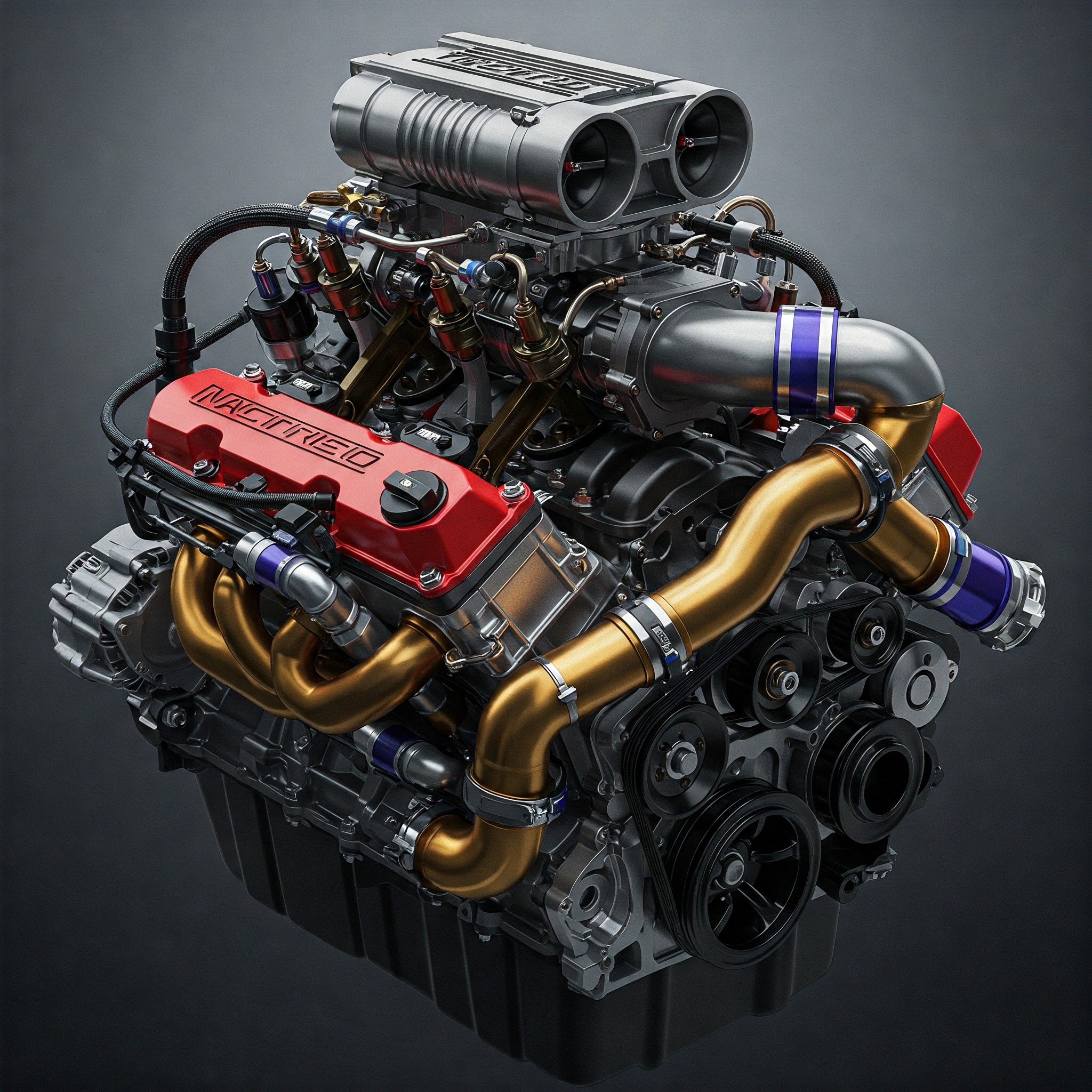Horsepower
Horsepower Formula |
||
|
\( HP \;=\; \dfrac{ F \cdot d }{ t }\) (Horsepower) \( F \;=\; \dfrac{ HP \cdot t }{ d }\) \( d \;=\; \dfrac{ HP \cdot t }{ F }\) \( t \;=\; \dfrac{ F \cdot d }{ HP }\) |
||
| Symbol | English | Metric |
| \( HP \) = horsepower | \(lbf-ft\;/\;sec\) | \(J\;/\;s\) |
| \( F \) = force | \(lbf\) | \(kg-m^2\;/\;s^2\) |
| \( d \) = distance | \(ft\) | \(m\) |
| \( t \) = time | \(sec\) | \(s\) |
 Horsepower, abbreviated as HP, is a measure of power or the rate of doing work. It is typically used to describe the work of an engine or machine and is the equivalent of moving 33,000 pounds through the distance of one foot in one minute. In the context of engines, horsepower is used to measure the power output of an engine. It is calculated by measuring the torque (rotational force) produced by the engine and multiplying it by the engine's rotational speed.
Horsepower, abbreviated as HP, is a measure of power or the rate of doing work. It is typically used to describe the work of an engine or machine and is the equivalent of moving 33,000 pounds through the distance of one foot in one minute. In the context of engines, horsepower is used to measure the power output of an engine. It is calculated by measuring the torque (rotational force) produced by the engine and multiplying it by the engine's rotational speed.
Horsepower is commonly used to compare the performance of different engines and vehicles. A higher horsepower rating generally indicates a more powerful engine, which can result in better acceleration, higher top speed, and greater towing or hauling capacity. However, horsepower alone does not tell the whole story of an engine's performance, as factors such as torque, fuel efficiency, and emissions must also be considered.
Horsepower Conversion Table
|
||
| Multiply | By | To Get |
| 2545.45766 | BTU per hour, BTU/hr | |
| 42.42429433 | BTU per minute, BTU/min | |
| 0.707071572 | BTU per second, BTU/sec | |
| 1980796.979 | foot pound-force per hour | |
| 33013.28298 | foot pound-force per minute | |
| 550.221383 | foot pound-force per second | |
| 1 | horsepower, hp | |
| 17702.8489 | pound square foot per cubic second | |
| 0.212121472 | ton of refrigeration, ton | |
| 2.6856E+13 | dyne centimeter per hour | |
| 4.476E+11 | dyne centimeter per minute | |
| 7460000000 | dyne centimeter per second | |
| 2685600 | joule per hour | |
| 44760 | joule per minute | |
| 746 | joule per second | |
| 746 | watt, W | |
| 0.746 | kilowatt, kW | |
| 0.000746 | megawatt, MW | |
| 0.000000746 | gigawatt, GW | |
| 2685600 | newton meter per hour | |
| 44760 | newton meter per minute | |
| 746 | newton meter per second | |

Horsepower Conversion Factor
|
Mechanical Horsepower (Imperial Horsepower)
Metric Horsepower (PS or CV)
Electrical Horsepower
Boiler Horsepower
Water Horsepower
Other Units of Power Conversion
Quick Conversion Factors
|
